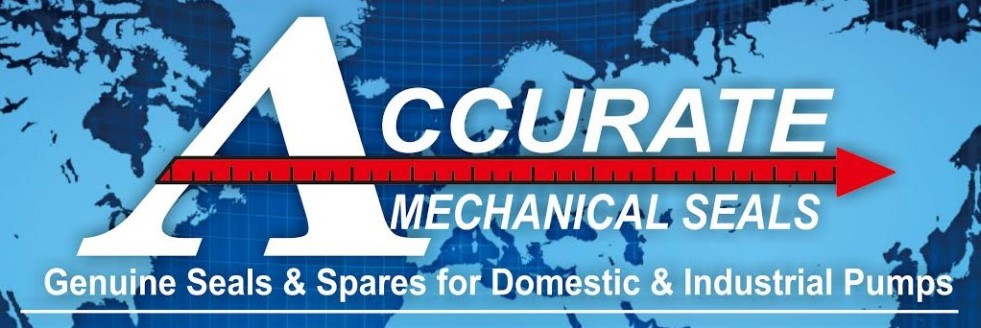HISTORY
HISTORY OF MACHANICAL SEALS
Mechanical Seal Industry is over 100 years old. The first known company was established in USA in 1905.The mechanical seal was invented by George Cook and was originally called a "Cook Seal". He also founded the Cook Seal Company. Cook's seal (which actually did not have a means of drive) was first used in refrigeration compressors. The Cook Seal company was a sideline product for Cook and he sold the company to Muskegon Piston Ring Company where it was renamed as The Rotary Seal Division of Muskegon Piston Ring Co. Muskegon Piston Ring sold the Rotary Seal Division to EG&G Sealol who in turn was largely acquired by John Crane in 1998.
Crane Packing Company started manufacturing of Auto motive mechanical seal in 1939 in USA; they had operations in USA, Canada & England. Crane Packing Company – renamed as John Crane in England. Crane Packing Company USA & Canada merged under John Crane in 1987.
Pacific & Dura metallic first manufactured mechanical face seals in 1930 in USA. BorgWarner started manufacturing mechanical face seals from 1955 in USA. These companies along with PAC Seals merged under Flowserve corporation- Flow solution.
Burgmann-Germany developed mechanical seal in 1962. Nippon – Sealol Co.Ltd. A joint venture between Sealol USA & Nok Japan started manufacturing mechanical face seal in 1964. This company changed its name to Eagle Industries Co.Ltd. in 1978. Burgmann & Eagle merged in 2004, to be known as Eagle – Burgmann.
The Rope Packing Companies like Chesterton, Johncrane and Garlock introduced Face Mechanical Seals in their Product Range.
An end face mechanical seal, also referred to as a mechanical face seal but usually simply as a mechanical seal, is a type of seal utilised in rotating equipment, such as pumps and compressors. When a pump operates, the liquid could leak out of the pump between the rotating shaft and the stationary pump casing. Since the shaft rotates, preventing this leakage can be difficult. Earlier pump models used mechanical packing to seal the shaft. Since World War II, mechanical seals have replaced packing in many applications.
An end face mechanical seal uses both rigid and flexible elements that maintain contact at a sealing interface and slide on each other, allowing a rotating element to pass through a sealed case. The elements are both hydraulically and mechanically loaded with a spring or other device to maintain contact. For similar designs using flexible elements, see Radial shaft seal (a.k.a "lip seal") and o-rings.
The initial requirements of sealing water in Automotive, Agriculture, Domestic sea water pumps for ships lead to the development of simple rubber end face seals.
Mechanical Rotary shaft seal is an assembly of two faces. One is stationary, fixed in the housing and the other is fixed on a rotary shaft. These two lapped faces are kept in contact with each other through a nominal positive pressure provided by the use of one or more springs.
Mechanical seal fundamentals
A mechanical seal must contain four functional components:
1) Primary sealing surfaces,
2) Secondary sealing surfaces,
3) A means of actuation and
4) A means of drive.
1) The primary sealing surfaces are the heart of the device. A common combination consists of a hard material, such as silicon carbide or tungsten carbide, embedded in the pump casing and a softer material, such as carbon in the rotating seal assembly. Many other materials can be used depending on the liquid's chemical properties, pressure, and temperature. These two rings are in intimate contact, one ring rotates with the shaft, and the other ring is stationary. These two rings are machined using a machining process called lapping in order to obtain the necessary degree of flatness.
2) The secondary sealing surfaces (there may be a number of them) are those other points in the seal that require a fluid barrier but are not rotating relative to one another.
3) In order to keep the two primary sealing surfaces in intimate contact, a means of actuation must be provided. This is commonly provided by a spring. In conjunction with the spring, it may also be provided by the pressure of the sealed fluid.
4) The primary sealing surfaces must be the only parts of the seal that are permitted to rotate relative to one another; they must not rotate relative to the parts of the seal that hold them in place. To maintain this non-rotation a method of drive must be provided.
With the growth of process industry the appropriate measured and the SEALING TECHNOLOGY adopted itself to meet the requirements.
1920-1945 |
|
Rubber end face seals |
1945-1960 |
|
Face Seals – Unbalanced &Balanced pusher seals. |
1960s &1970s |
|
Some of the leading companies like Johncrane, Flixibox, Burgman, Borg Warner, Pilar, Pacific, Dura metallic and Sealol spread their operations by setting up Joint Ventures in other Asian/Australia/South America/European and African Countries. Chesterton appointed Distributors across the Globe. |
1970- 1980 |
|
Invention of Metal Bellow Seals & Silicon Cartridge for high temperature & cryogenic application a superior face material. |
1980s |
|
European Countries tried to standardise seal sizes and stuffing box cavity by introducing DIN Standards. This allowed interchangeability between Seal Manufacturers. Both U.K. and American companies still persist with Inch standards. |
Late 1980s |
|
Non Contacting Dry Gas Seals by Johncrane for High Speed centrifugal compressors. |
1995 |
|
Seal Companies face severe competition among them and try to acquire to survive. The result was formation of three groups. |
|
||
|
||
|
||
2000 |
|
Some Distributors of Chesterton breakaway to form their own manufacturing companies like AESSEALS. |
2000s |
|
New Concepts of Hydraulics introduced in Sealing Technology like:- |
